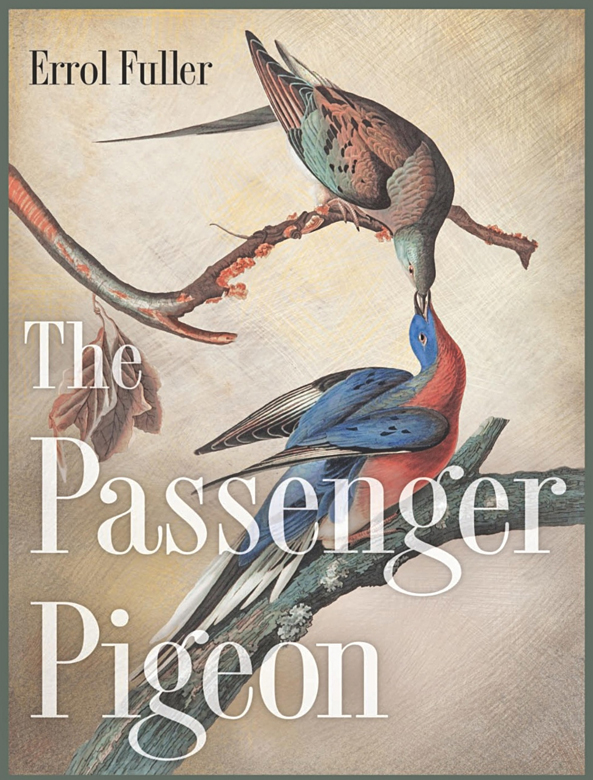Most readers of this blog will be familiar with Erroll Fuller and the huge quantity he has published on recently extinct birds. His books typically combine a discussion on the biology, history and extinction of the species, a section on existing specimens (as in, museum mounts and skins and eggs and so on), and some good coverage of the animal’s appearances in art and popular culture.
Cover, featuring John James Audubon’s illustration from The Birds of North America. Credit: fair use.
Fuller’s 2015 The Passenger Pigeon does all this and more, and is an extremely well-illustrated, popular review of what we know of this species. The Passenger pigeon Ectopistes migratorius is/was a long-tailed, swift-flying pigeon, famous for existing in nomadic flocks of billions by the time Europeans began colonising North America. How the birds came to be so phenomenally abundant, whether this was an ephemeral or long-lived phenomenon, and how linked this was to human-caused habitat change are good questions and there are reasons for thinking that a population of billions was not a pre-Holocene condition (e.g., Mann 2011).
Juvenile, male and female Passenger pigeon, as illustrated by Louis Agassiz Fuertes in 1910. Credit: public domain, original here.
Fuller’s The Passenger Pigeon is not a gargantuan magnum opus like his The Great Auk (Fuller 1999). It’s far smaller (25 x 19 cm) and slimmer (177 pages). It includes an extraordinary number of photos, paintings and drawings, and indeed is a very attractive volume. Numerous black and white photos, mostly taken of captive birds in the early 1900s, depict the animals in life. There are photos of Martha (fabled ‘last of the passenger pigeons’) too, and reproductions of many paintings and other artworks.
The Passenger Pigeon is not an academic tome with technical citations and any extended discussion of thoughts on this bird’s evolution or biology. But it’s a good book nonetheless and I definitely recommend it for anyone interested in pigeons and/or in recently extinct birds.
The Passenger Pigeon is not as huge and impressive as Fuller’s The Great Auk book, but that’s ok. Credit: fair use.
Errol Fuller. 2015. The Passenger Pigeon. Princeton University Press (Princeton and Oxford), pp. 177. ISBN 978-0-691-16295-9. $29.95. Hardback, index, refs. Here at amazon, here at amazon.co.uk, here from the publishers.
For previous TetZoo articles on pigeons and kin, see…
The detachable tails of pigeons, September 2008
Are parrots actually pigeons?, May 2009
Giant club-winged pigeons and ninja ibises: clubs, spurs, spikes and claws on the hands of birds (part III), February 2011
Sunbathing birds, August 2011
The war on parasites: the pigeon’s eye view, the oviraptorosaur’s eye view, August 2012
Footless urbanite pigeons, September 2014
Voyeurism and Feral Pigeons, June 2015
The Asian Dove That Ate Europe Alive, January 2017
Pigeons and Doves 101, March 2018
Refs - -
Fuller, E. 1999. The Great Auk. Erroll Fuller, Southborough, Kent.
Mann, C. C. 2011. 1491: New Revelations of the Americas before Columbus. Vintage, New York.







